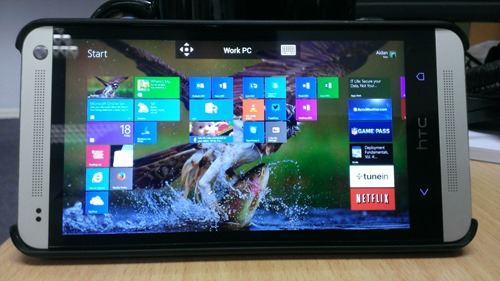Yesterday we heard about iOS getting an official Microsoft Remote Desktop (RemoteFX) app. Today, I found that a version was also released for Android.
Features include:
- Access to remote resources through your Remote Desktop Gateway
- Rich multi-touch experience with remote desktop protocol (RDP) and RemoteFX supporting Windows gestures
- Secure connection to your data and applications with breakthrough Network Layer Authentication (NLA) technology
- Simple management of all remote connections from the connection center
- High quality video and sound streaming with improved compression and bandwidth usage
I tried it out. It works. My high-res desktop looks tiny on my HTC One phone, but the zoom option makes is useful for quick operations. This would be a much better experience on a 10” tablet.
For Mac OS X (10.6.0 or later) have been able to get an old version of Remote Desktop with Microsoft Office for Mac. I read on MacRumours that there is an updated version offering:
- Access to remote resources through the Remote Desktop Gateway
- Secure connection to your data and applications with breakthrough Network Layer Authentication (NLA) technology
- Simple management of all remote connections from the connection center
High quality video and sound streaming with improved compression and bandwidth usage - Easy connection to multiple monitors or projectors for presentations
- Print from Windows applications to any printer configured on your Mac
- Access local files on your Mac from your Windows applications
I know nothing about the upgrade process for Mac users.

